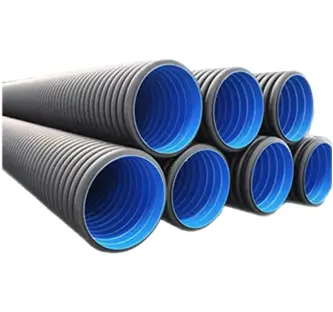Dec . 25, 2024 12:55 Back to list
China HDPE Pipe Sizes and Specifications for Various Applications
Understanding the Dimensions of HDPE Pipes in China
High-Density Polyethylene (HDPE) pipes have become an essential component in various fields, including water supply, sewage, agriculture, and drainage systems. Their popularity stems from their durability, resistance to corrosion, and flexibility. In China, the HDPE pipe market has experienced significant growth over the past few years, driven by extensive industrial and municipal infrastructure projects. This article will explore the common diameters of HDPE pipes available in the Chinese market and their applications.
What is HDPE?
HDPE is a type of thermoplastic made from petroleum, known for its high strength-to-density ratio. Characteristics such as resistance to impact, low moisture absorption, and chemical resistance make HDPE an ideal choice for piping systems. The production of HDPE pipes involves extrusion, where plastic granules are melted and formed into pipes of varying diameters.
Standard Diameters of HDPE Pipes
In China, HDPE pipes are available in various diameters, typically measured in millimeters (mm). The dimensions generally conform to the standards set by organizations such as the Chinese National Standards (GB) and the American Society for Testing and Materials (ASTM). Here are some of the most common diameters of HDPE pipes used in the Chinese market
1. 20mm to 32mm These smaller diameters are often used for domestic water supply and irrigation systems. They are easy to handle and install, making them suitable for residential applications.
2. 40mm to 63mm These pipes are commonly used in agricultural applications for drip irrigation and sprinkler systems. Their diameter allows for adequate water flow while minimizing pressure loss.
3. 75mm to 110mm Pipes of this diameter are suitable for municipal water supply systems, sewage systems, and industrial applications. They provide a balance between flow capacity and pressure management.
4. 160mm to 250mm These larger diameters are typically used in major water distribution networks and wastewater treatment plants. They are designed to handle significant volumes of water and resist high-pressure environments.
5. 315mm and above Pipes with diameters of 315mm and larger are generally used for large-scale infrastructure projects, including hydroelectric power plants, large irrigation systems, and urban sewage systems.
Applications of HDPE Pipes
china hdpe pipe diameters

HDPE pipes are versatile and can be used in various applications, including
- Water Supply HDPE is widely used in municipal water distribution systems due to its corrosion resistance and low friction coefficient. This ensures clean drinking water is safely transported without contaminants.
- Sewage and Drainage Systems HDPE’s ability to withstand harsh chemical environments makes it ideal for wastewater management. The smooth inner surfaces reduce blockages and allow for efficient flow.
- Agricultural Irrigation HDPE pipes are essential in modern agriculture, enabling efficient irrigation through drip and sprinkler systems. Their flexibility allows for easy installation in different terrains.
- Industrial Applications Industries require robust piping systems for transporting chemicals, gases, and other materials. HDPE's chemical resistance and strength make it suitable for these applications.
Advantages of Using HDPE Pipes
1. Longevity HDPE pipes are resistant to corrosion and can last for decades with proper installation and maintenance.
2. Flexibility Their ability to bend and adapt to the landscape makes them easier to install, reducing the need for extensive trenching.
3. Lightweight Compared to traditional piping materials, HDPE is lightweight, leading to lower transportation costs and easier handling during installation.
4. Eco-Friendly HDPE is recyclable, and its long life cycle reduces the environmental impact compared to other materials.
Conclusion
The growing demand for HDPE pipes in China reflects the country's rapid urbanization and industrialization. With a wide range of diameters available, these pipes cater to various applications, making them a reliable choice for infrastructure development. As construction and agriculture continue to evolve, the significance of HDPE piping systems is likely to increase, ensuring the efficient and sustainable management of resources in the future. By understanding the dimensions and applications of HDPE pipes, stakeholders can make informed decisions that contribute to better infrastructure solutions.
-
High-Quality PVC Borehole Pipes Durable & Versatile Pipe Solutions
NewsJul.08,2025
-
High-Quality PVC Perforated Pipes for Efficient Drainage Leading Manufacturers & Factories
NewsJul.08,2025
-
High-Quality PVC Borehole Pipes Durable Pipe Solutions by Leading Manufacturer
NewsJul.08,2025
-
High-Quality PVC Borehole Pipes Reliable PVC Pipe Manufacturer Solutions
NewsJul.07,2025
-
High-Quality UPVC Drain Pipes Durable HDPE & Drain Pipe Solutions
NewsJul.07,2025
-
High-Quality Conduit Pipes & HDPE Conduit Fittings Manufacturer Reliable Factory Supply
NewsJul.06,2025

